The "Gone Too Soon" Movie Star Hall of Fame: A Statistical Analysis
Which actors left us too soon, yet remain unforgettable?
Intro: The Lee Family Curse
Brandon Lee may be the most notable actor to have starred in exactly one major Hollywood film. In 1993, while wrapping production on The Crow, Lee was fatally wounded when a prop gun—improperly prepared with a lodged bullet fragment—fired with the force of a live round. After a brief shutdown, production on The Crow was finished using stand-ins and visual effects, and Lee’s performance was praised as a tragic glimpse of a promising career. If you’re reading this and thinking, “Wow, that’s really sad.” Well, you’re correct—and it gets sadder.
Brandon Lee’s untimely death is rendered all the more tragic by his lineage: he was the son of legendary martial artist Bruce Lee. In 1973, Bruce Lee was on the cusp of global superstardom, having completed filming on Enter the Dragon—a movie that would (posthumously) launch him to international fame. Just before the film’s release, Lee died suddenly at age 32 after taking a painkiller for a headache and falling unconscious. The eerie parallels between his death and his son’s passing have elicited claims of a “Lee Family Curse.”
The father-son duo of Bruce and Brandon Lee are striking examples of actors “gone too soon”—beloved performers who died before reaching their cultural apex. The sudden, premature loss of a public figure (movie star, singer, generational politician) tends to linger in popular imagination, with their deaths endlessly memorialized and dissected for decades to come. In recent years, the rise of digital media has reshaped how we grieve these parasocial relationships, transforming the way people learn about, react to, and collectively mourn public tragedies.
So today, we’ll explore how public grieving has migrated online and use the data generated by these newfangled rituals to construct a pantheon of actors “gone too soon.”
Our Data Source: Wikipedia, The World’s Digital Burial Ground
Before Wikipedia, mourning a public figure’s death was shaped by media gatekeepers and the public’s attention span. A famous person would pass away, a few newspaper obituaries would run, a memorial might be erected (in a single location), and their work would resurface on TV for a week (maybe two). Then the grieving period would end, and that person would recede from public consciousness, survived by the occasional rebroadcast or retrospective, an encyclopedia entry, and perhaps an Elton John song written in their honor. From that point forward, remembering this individual would require meaningful effort.
Then came the dot-com boom. Amid a flood of buzzy search engines and education sites, Wikipedia was born. The site quickly became the world’s de facto reference tool and quietly reshaped how we mourn public figures. By the late 2000s, a notable person’s Wikipedia page often doubled as a living memorial, offering digital permanence in the wake of their death. These entries were widely accessible, unconstrained by time and space, while also being deeply informative.
Upon news of a celebrity’s passing, millions will flock to their Wikipedia page to learn more about their life and pay tribute digitally. Consider Chadwick Boseman, Matthew Perry, Kobe Bryant, and David Bowie—in each case, their pages saw massive traffic spikes as word of their death spread (a data point that should be easy to spot in each chart).
We also observe a persistent increase in traffic in the years following their deaths, although this effect is subtle compared to the initial uptick.
When I was in high school, my social studies class dedicated four weeks of instruction to Wikipedia’s unreliability. County administrators created a bespoke curriculum to disincentivize students from using the fledgling reference site, which was then widely scrutinized for crowdsourcing information. During this period, Vanilla Ice’s Wikipedia page might just say the word “poop” for five minutes before being corrected by its editors. It was the wild west of Wikipedia.
The online encyclopedia has since come a long way, now serving as ChatGPT’s default training dataset and gradually replacing (or at least supplementing) several rituals of collective grieving.
Wikipedia’s role as digital graveyard extends beyond reactive grief: people actively visit the site to learn who might have died. In 2024, the platform’s most-trafficked page was “Deaths in 2024,” which drew more views than Donald Trump, who was elected president that November.
Every year, an article dedicated to “Deaths in [Insert Year]” ranks among the site’s five most-visited pages. At first, I assumed that 99% of this article’s traffic fell on December 31st—as part of some year-end ritual—but in reality, people start visiting this page in early January, and traffic grows steadily until next year’s edition goes live.
The cynical interpretation of this phenomenon is that people are morbidly fascinated by celebrity deaths, like drivers gawking at a car crash. But I prefer to think of Wikipedia as a digital burial ground where people can go to wander, reflect, and learn about those we’ve lost.
Enjoying the article thus far and want more data-centric pop culture content?
The “Gone Too Soon” Movie Star Hall of Fame
If an actor’s Wikipedia page doubles as their digital tombstone, then we can approximate cultural significance by how many people visit this memorial.
There is, however, one complicating factor when using web traffic as a proxy for reverence: time. Heath Ledger’s page will inevitably receive more views than James Dean’s, simply because Dean’s cultural apex was over 60 years ago. To solve for this, we’ll construct a model that estimates annual Wikipedia traffic based on the number of years since an actor’s birth.
Using this regression model, we can compare a movie star’s page traffic to the average for their peers. For instance, Brandon Lee’s Wikipedia article received 165% more views than the norm for an actor born the same year.
We’ll use percent above expected web traffic as our measure of cultural import, while box office trends will help identify the threshold for a performer’s premature passing.
On average, leading actors reach their commercial peak in their 40s—a period when their films draw the largest audiences and their cultural footprint is most substantial. They’ve yet to suffer the indignity of being the seventh lead in a Marvel movie—cast as our titular hero’s steadfast parental figure who will inevitably die at the end of act two.
As such, we’ll use age 50 as our threshold for “gone too soon.”
Our resulting stack-ranked list offers a bleak roll call of Hollywood tragedies, including those of Bruce and Brandon Lee.
Because people will undoubtedly ask: yes, Elvis qualifies as an actor; he starred in over 30 movies (many of them bad, but that doesn’t change the breadth of his filmography).
Some notable omissions that just missed our top twelve include: Natalie Wood, Chadwick Boseman, Paul Walker, Corey Haim, Chris Farley, Sharon Tate, John Belushi, Anton Yelchin, and Jean Harlow.
In reviewing this list, two patterns stand out:
A Forever Young Effect: Most of these figures are iconographically frozen in time, their deaths coinciding with the peak of their cultural influence. A few miles from my house, there’s a mural featuring Kobe Bryant, James Dean, and weirdly nobody else. As far as I can tell, the only thing these two have in common is that they both died young and lived in Los Angeles. The painting depicts both figures at their most iconic: Dean, a brooding twenty-something; Bryant, in the midst of a jump shot. This is how Bryant and Dean will be depicted in 90% of artistic representations (pretty much forever). Because we never saw their next chapter, they remain suspended in a kind of mythic permanence.
Their Body of Work Imbues Their Death with Greater Meaning (And Vice Versa): The Crow tells the story of a man who dies too soon, is resurrected to avenge those who destroyed his life, and ultimately returns to death, finally at peace. To state the obvious: the film’s story echoes Brandon Lee’s untimely passing. As morbid as it sounds, The Crow’s narrative confers deeper meaning on Lee’s death, just as his passing heightens the performance’s impact. As the film closes and our hero returns to his grave, we’re left with the impression that Lee, too, rests in peace. Fact and fiction blend together. As a thought experiment, imagine if Lee had died while filming a romantic comedy like Four Weddings and a Funeral or Reality Bites, both released that same year. His passing would be a tragic loss, but his death would not capture popular imagination in the same manner. The same goes for Heath Ledger, whose death is inextricably linked to his final performance as the Joker. In many cases, an actor’s most iconic (or final) role becomes the lens through which audiences process a senseless death, and serves as the lasting image associated with that performer.
Final Thoughts: A Perfect Game
John Cazale is, first and foremost, a gifted actor who died tragically at the age of 42. His impeccable body of work and untimely passing have also made him a well-known trivia factoid for movie nerds.
Cazale appeared in five films, all in prominent supporting roles—and it just so happens that each movie qualifies as an all-time classic and was nominated for Best Picture: The Godfather, The Godfather Part II, The Conversation, Dog Day Afternoon, and The Deer Hunter. His filmography is the metaphorical equivalent of a baseball pitcher throwing a perfect game and subsequently retiring.
But what if we changed his resume and replaced The Deer Hunter with Weekend at Bernie’s or Revenge of the Nerds (two wildly illogical substitutions)? Would Cazale still make our “gone too soon” hall of fame? Would he still capture collective imagination in the same way? My best guess is no.
His talent would remain unchanged, as would his performances in The Godfather movies, but he would no longer be the actor who pitched a “perfect game.” He would cease to be “John Cazale, actor with the flawless filmography.”
Cazale’s legacy is shaped by two intertwining forces:
His Actual On-Screen Performances: they’re all incredible—he was a remarkable talent.
His Myth: Cazale’s brief but flawless filmography deepens his cultural imprint.
These phenomena are mutually reinforcing, suffusing his legacy with a cultural stickiness and keeping Cazale’s memory alive.
According to Mexican tradition, everyone experiences three deaths:
When the body stops functioning.
When the body is buried or cremated.
When the deceased is forgotten entirely.
In the case of John Cazale, James Dean, and Brandon Lee, the resonance of their work and the mythology surrounding their deaths ensure they remain unforgotten—and that their Wikipedia pages remain well-visited.
Struggling With a Data Problem? Stat Significant Can Help!
Having trouble extracting insights from your data? Need assistance on a data or research project? Well, you’re in luck because Stat Significant offers data consulting services and can help with:
Insights: Unlock actionable insights from your data with customized analyses that drive strategic growth and help you make informed decisions.
Dashboard-Building: Transform your data into clear, compelling dashboards that deliver real-time insights.
Data Architecture: Make your existing data usable through extraction, cleaning, transformation, and the creation of data pipelines.
Want to chat? Drop me an email at daniel@statsignificant.com, connect with me on LinkedIn, reply to this email, or book a free data consultation at the link below.
Want to chat about data and statistics? Have an interesting data project? Looking to produce data-centric editorial content? Email daniel@statsignificant.com


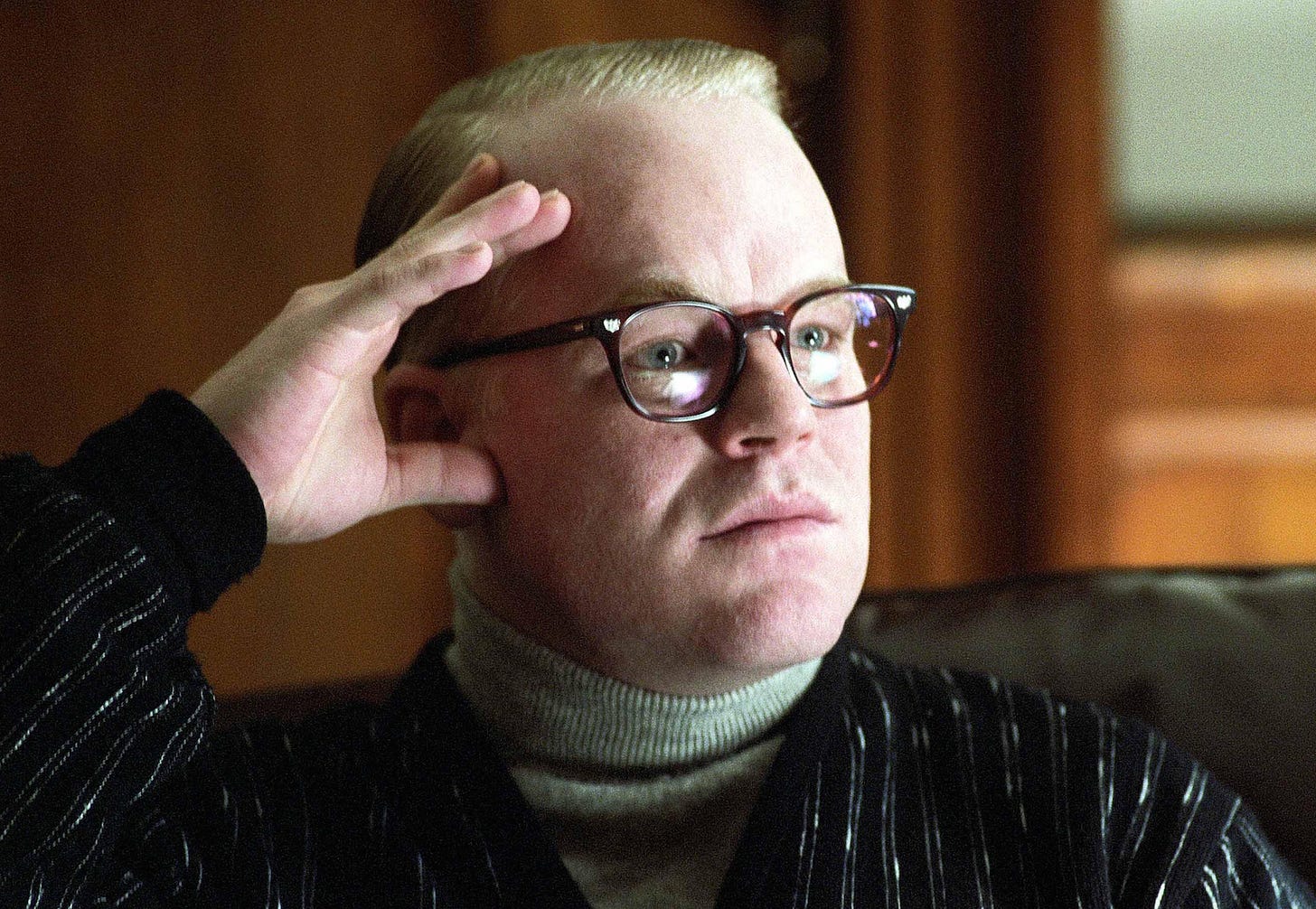
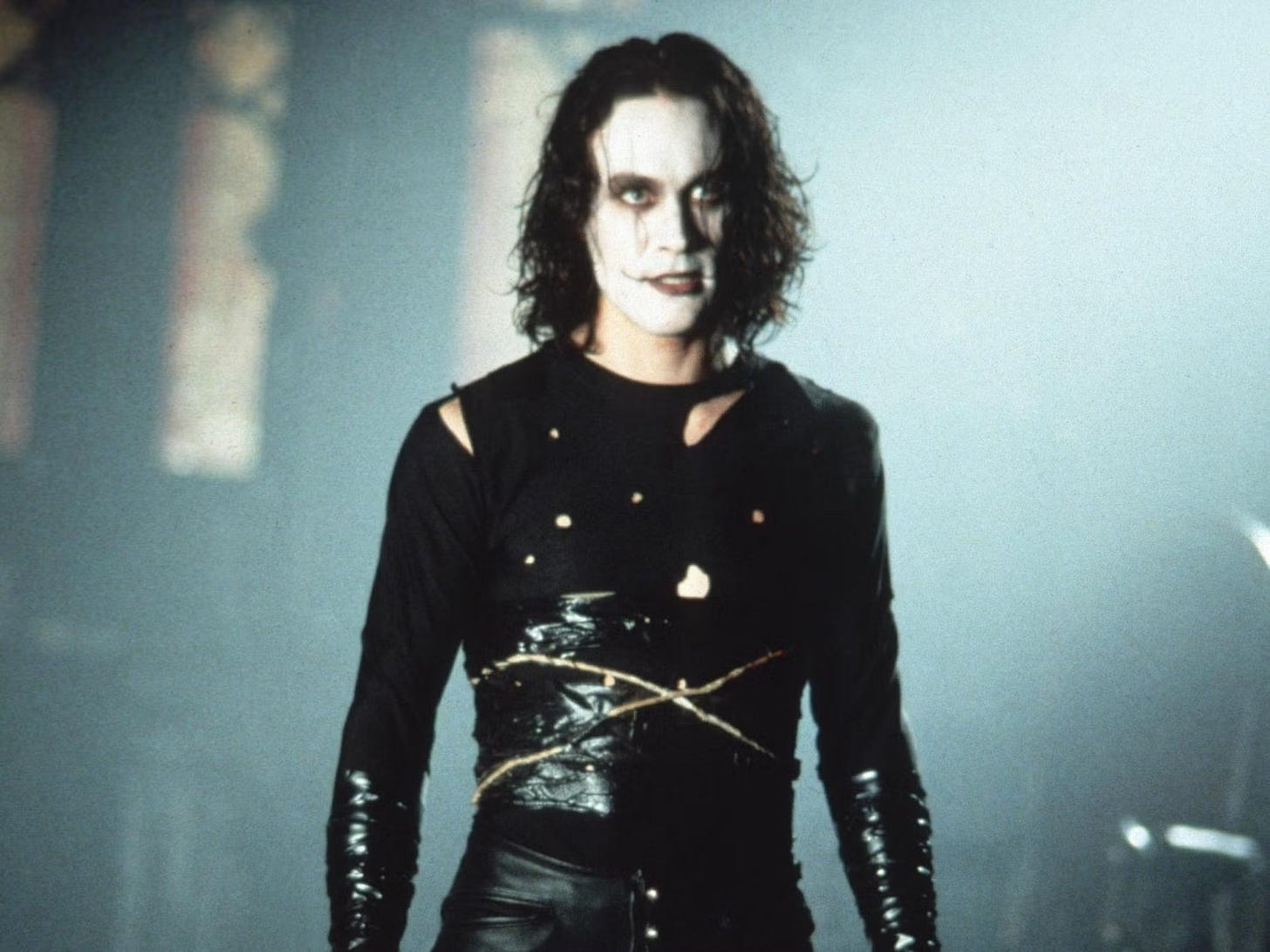
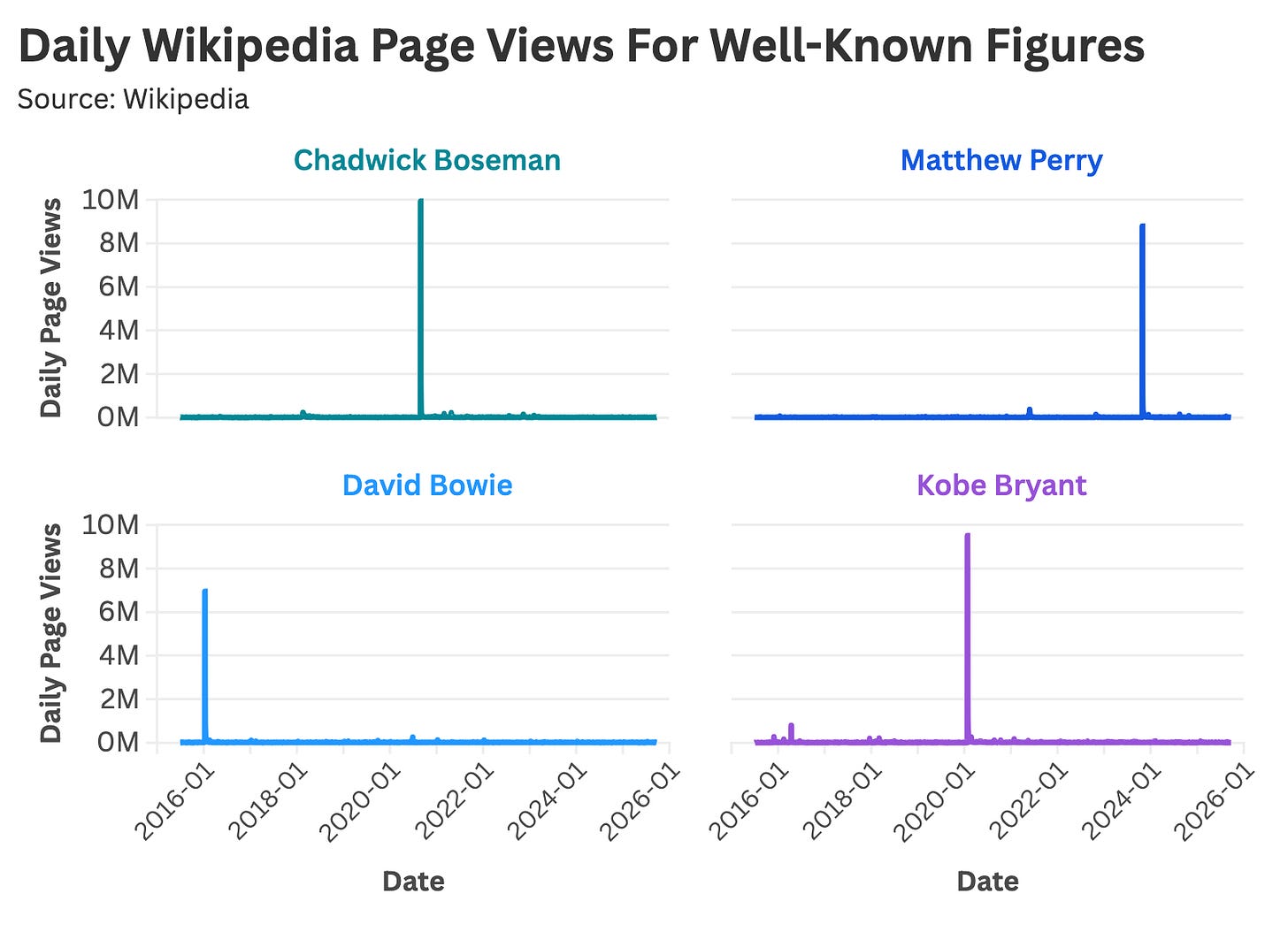
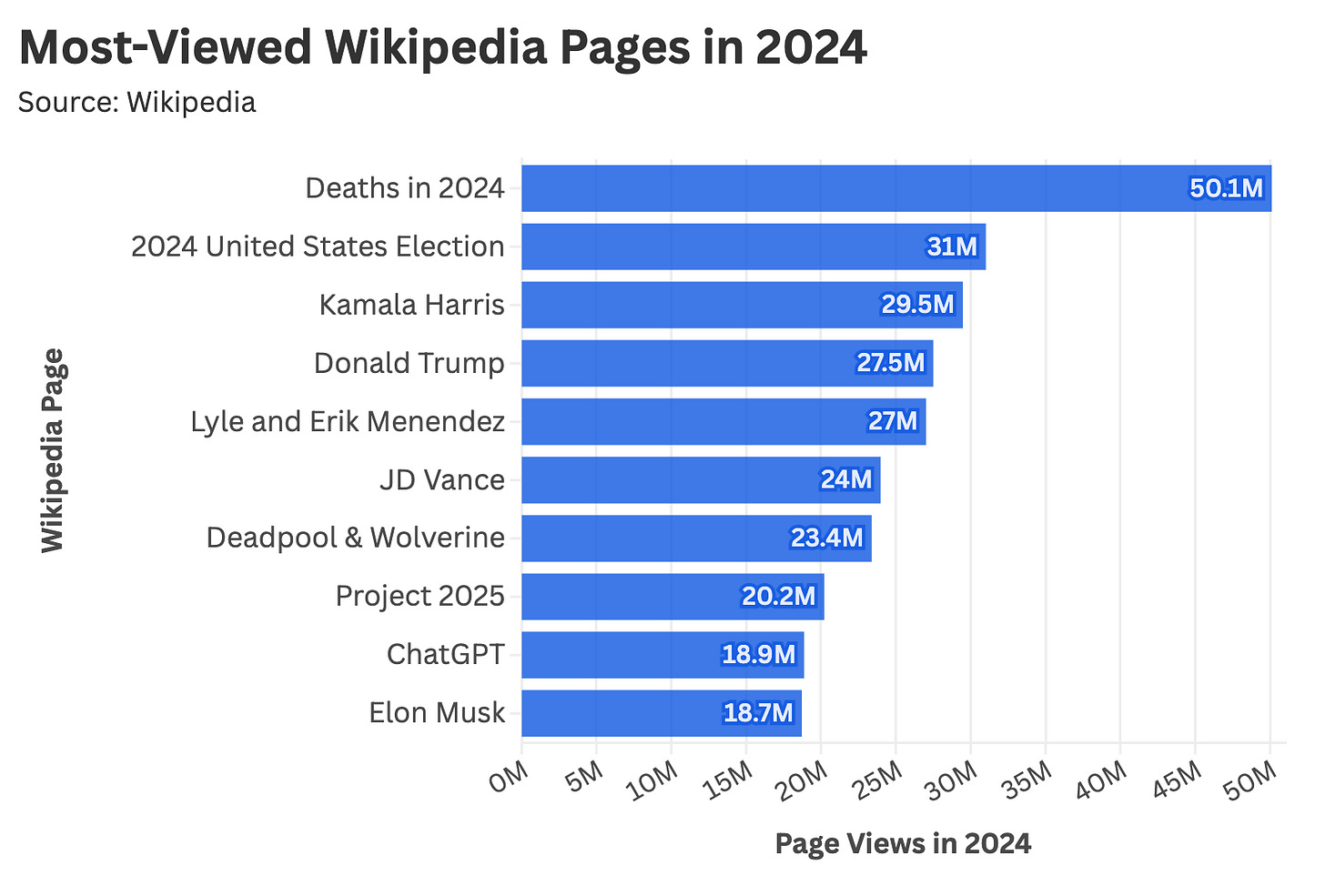
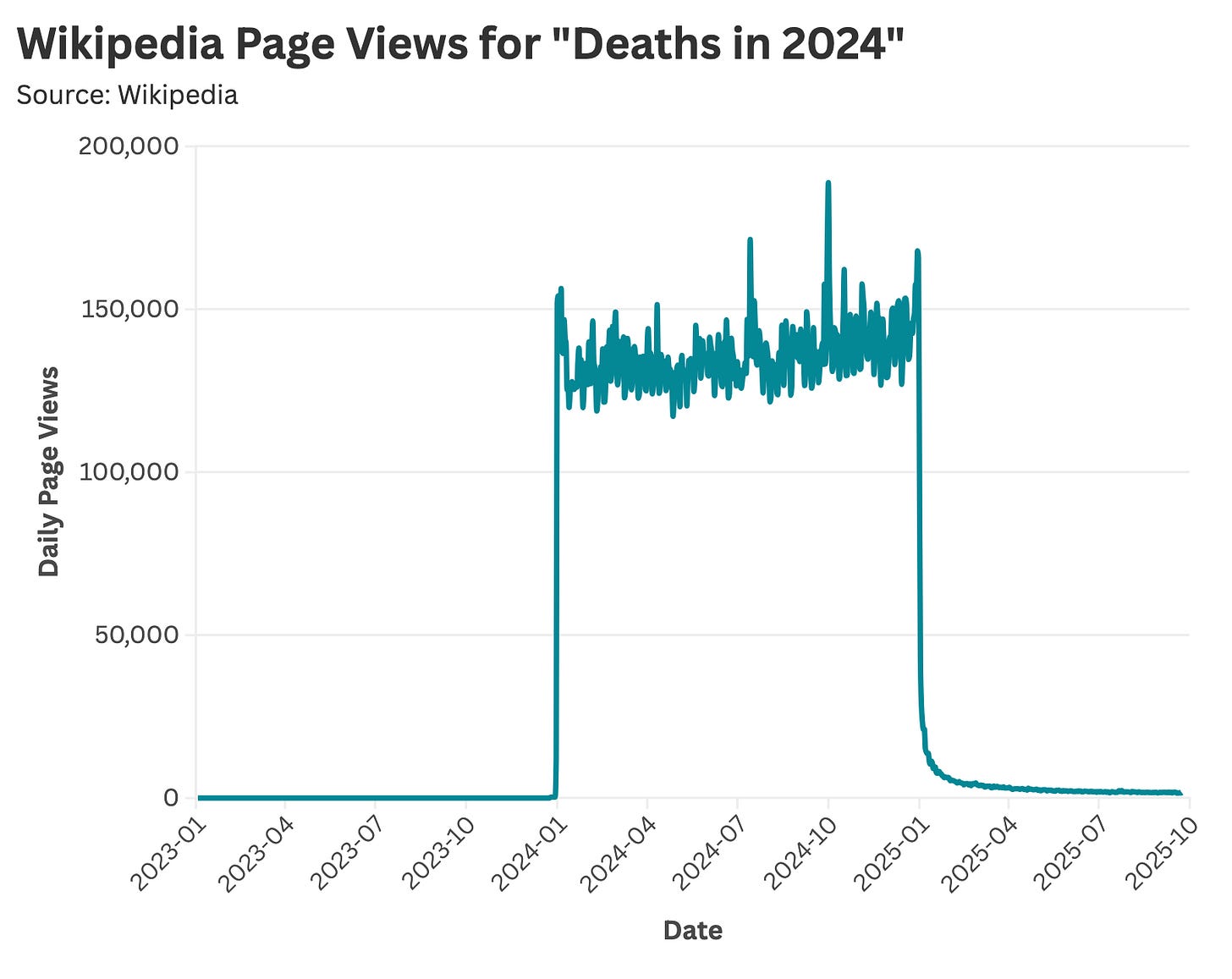
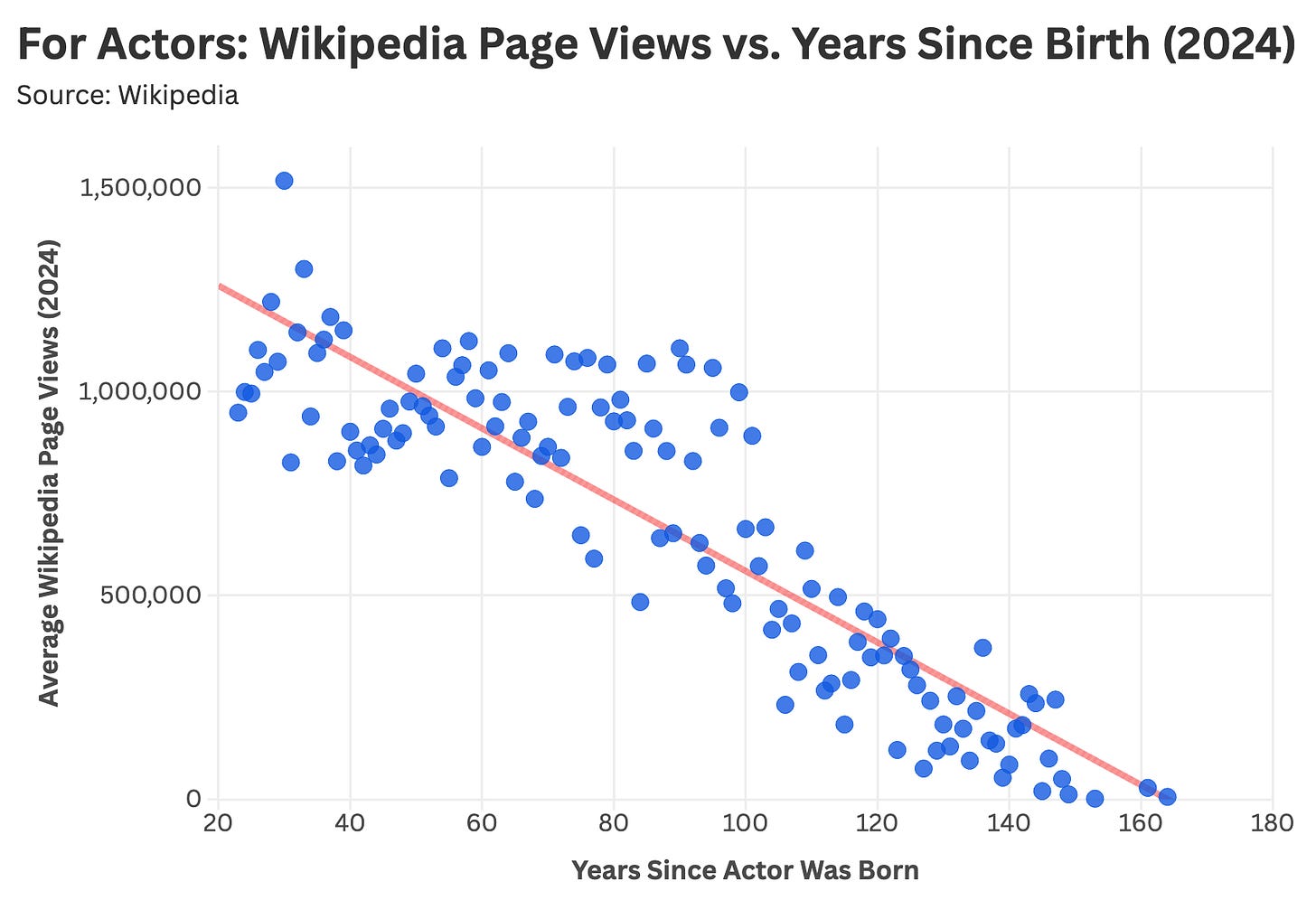
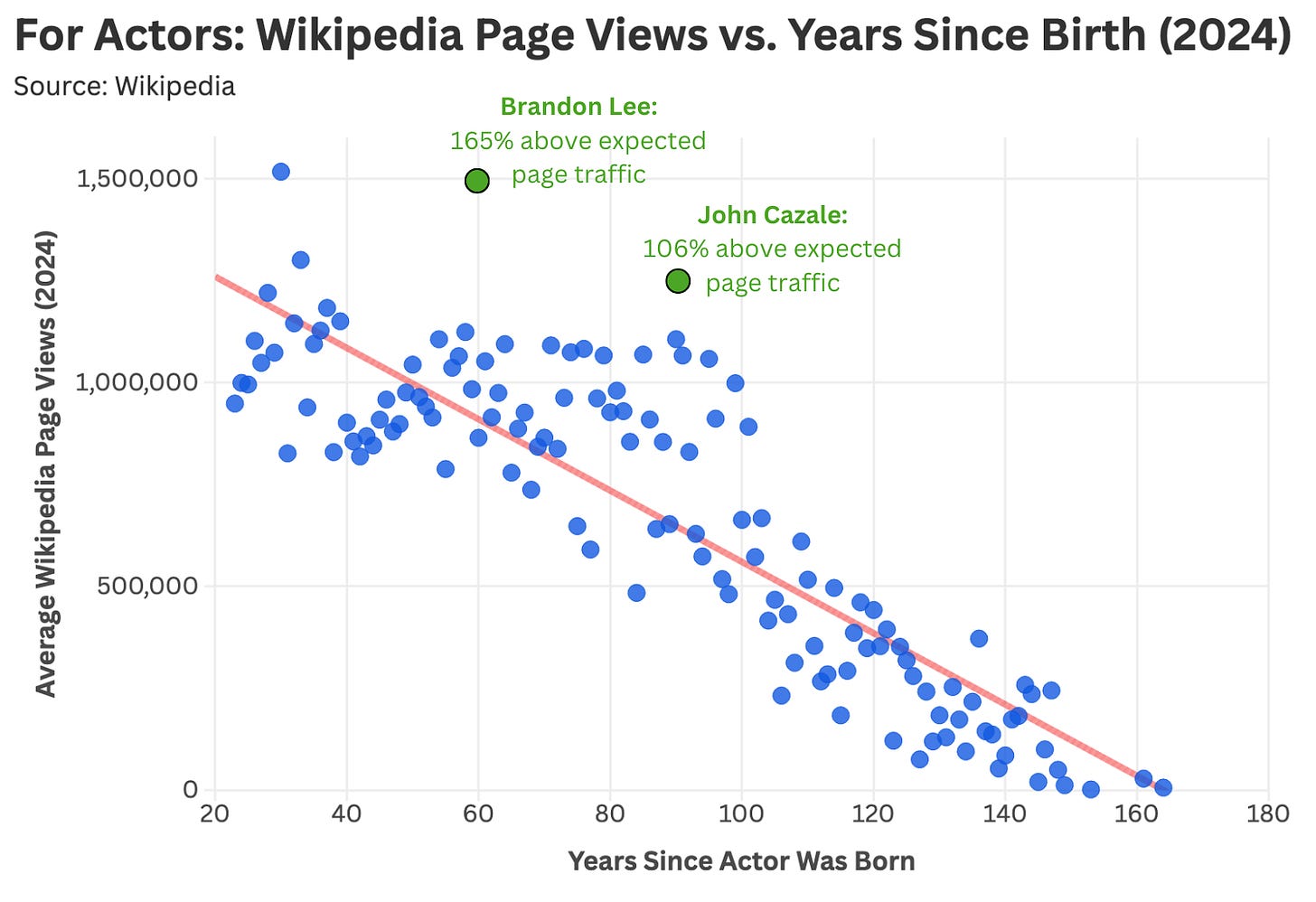
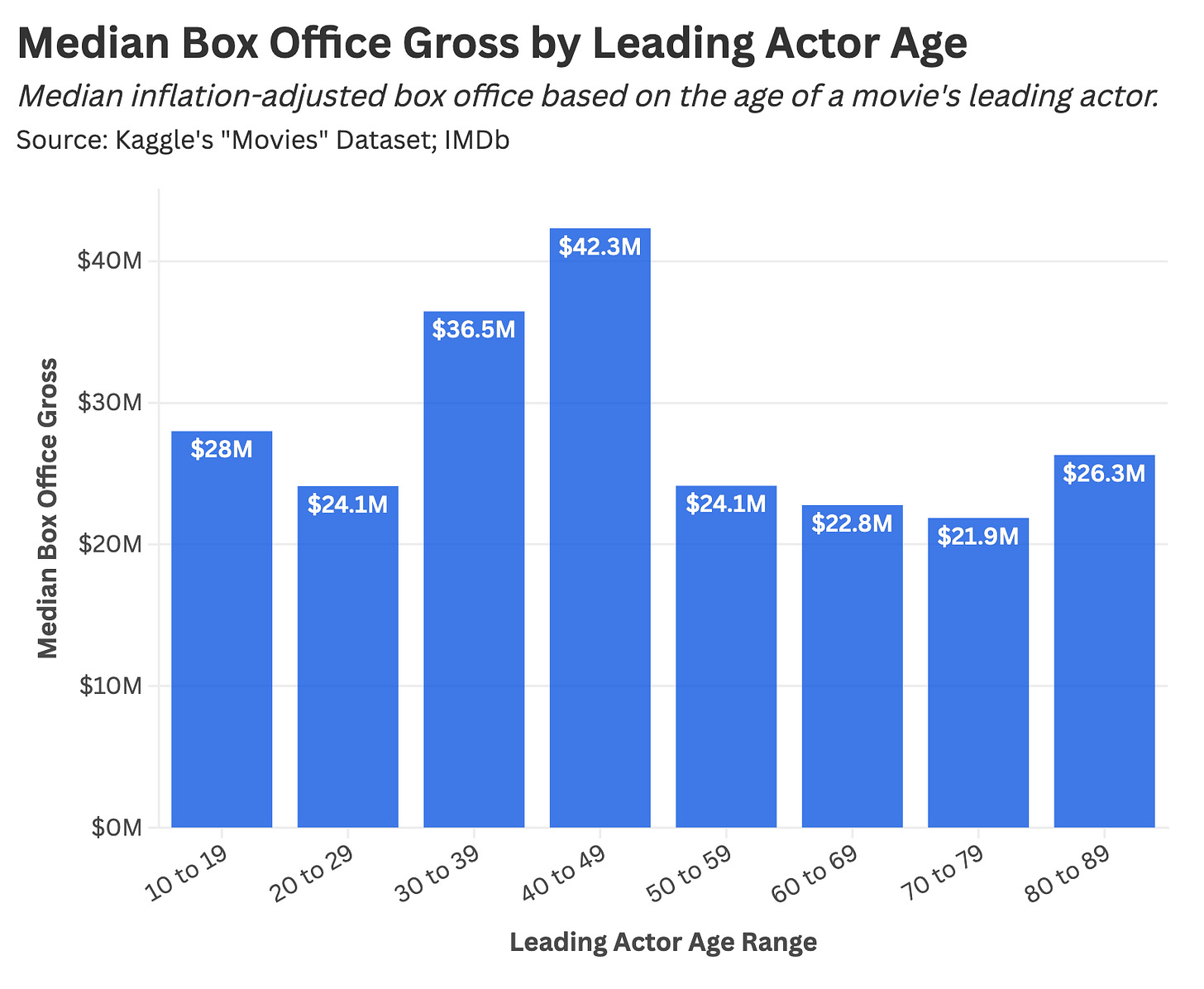
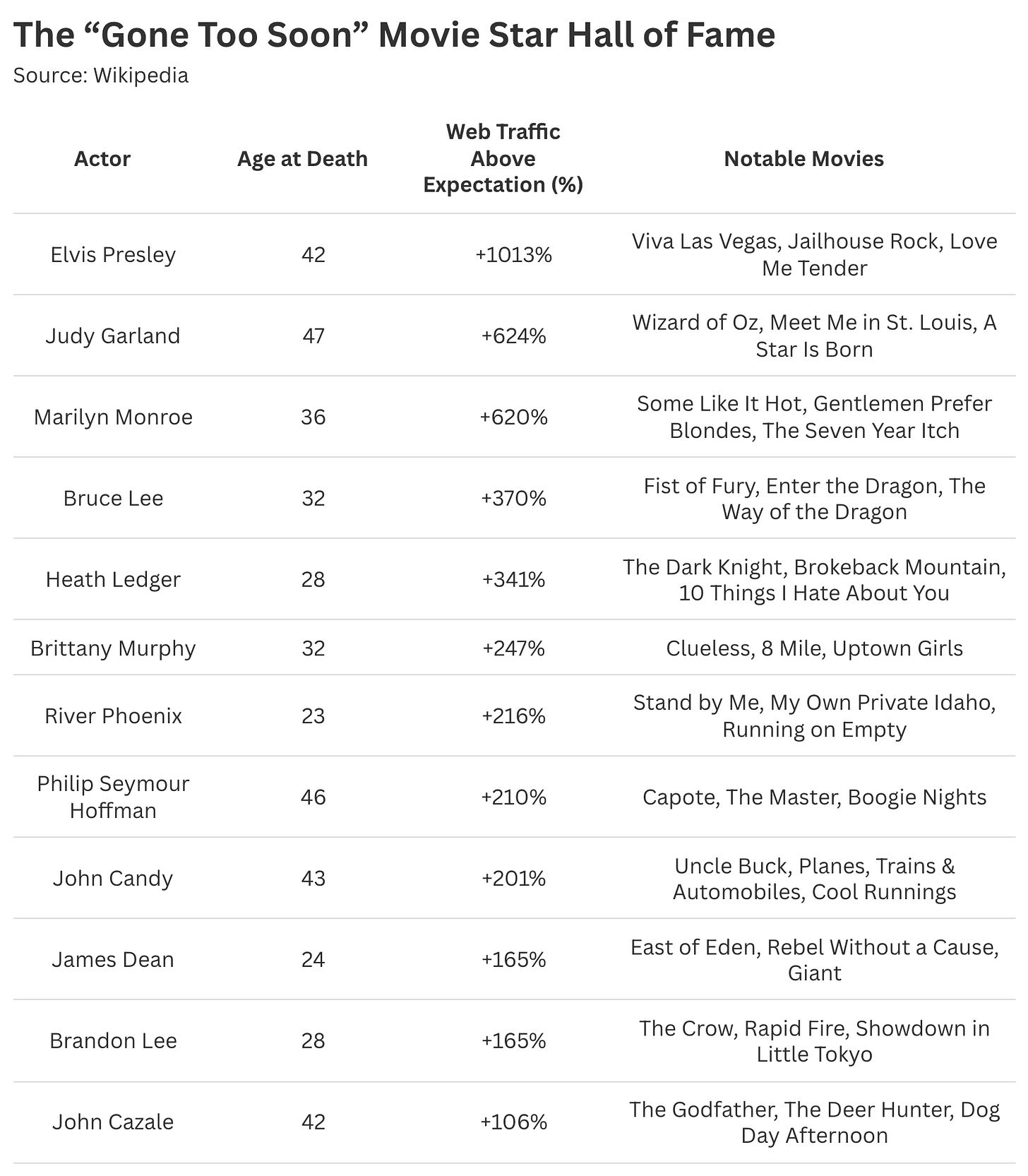
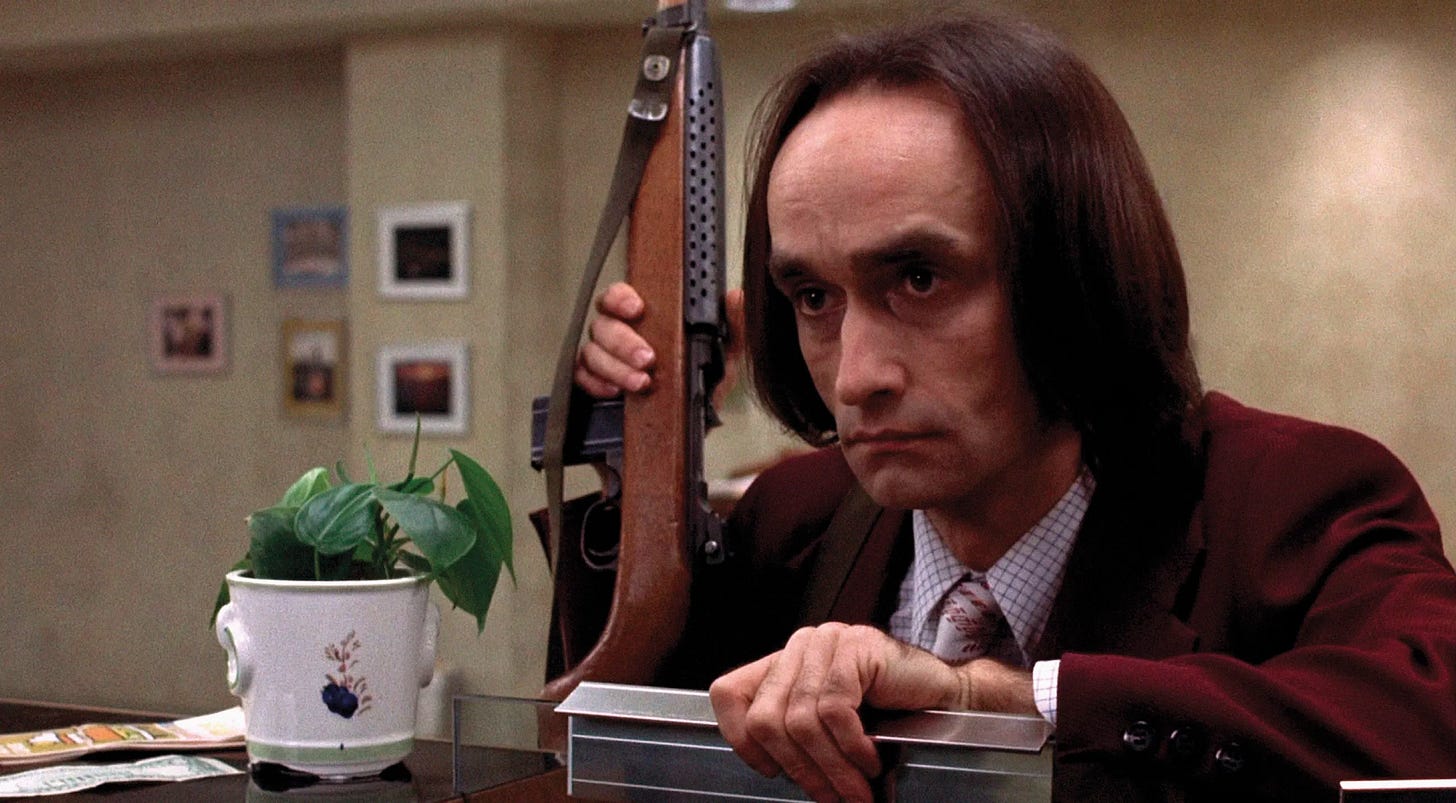

Great post.
Interesting that in the regression there are clear trends in the residuals.
For example, 50-90 years since birth (1935-1975?) has more "above expected" actors. Perhaps this corresponds to a period when these actors were featured on screen and more people were going to movies and thus familiar with their work.